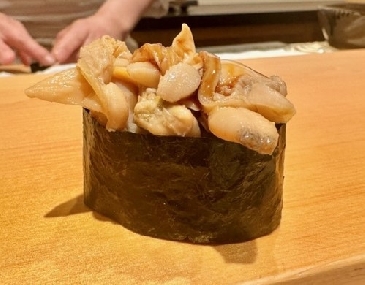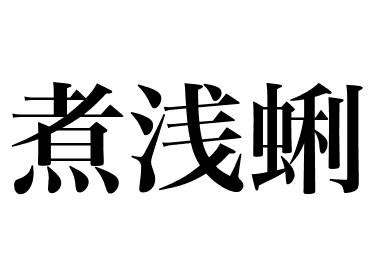Simmered


Japanese clam (Asari)
【Nigiri sushi: Nimono】
What is Japanese clam (Asari)?
Japanese clam (Asari) is distributed from Hokkaido to Kyushu, the Korean Peninsula, the Philippines, and Taiwan. It is found mainly in sandy muddy areas from the intertidal zone of inner bays to depths of meters. Shell length is about 4 cm. The shell is egg-shaped, with a rough, fabric-like outer surface, and its pattern is highly variable among individuals. It spends its entire life in almost the same place and is not remarkably migratory like the common orient clam. There are also various theories, such as "Asari (Asai means shallow)" because it lives in shallow water.
Major production areas include Aichi Prefecture and Hokkaido. They are in season in spring and fall, when glycogen and succinic acid increase. Select shelled ones that are alive and have legs that move well. If the mouth does not open and the shell is brownish-brown in color, it is most likely dead.
The amount of Japanese clam produced domestically is less than 10,000 per year. Therefore, about 25,000 tons of Japanese clam have been imported from China and 10,000 tons from Korea for several years. And they have been the primary source of food fraud, causing frequent problems. The reason is the system whereby imported young clams are raised on the beach for a few weeks and then shipped as "from the beach.
What does Japanese clam (Asari) sushi taste like?
Fukagawa-don is a Tokyo specialty, made by lightly simmering Japanese clam (asari) in soy sauce and other seasonings, then pouring the soup over hot rice. Asari-no-sakamushi (Sake-Steamed Clams) is a staple menu item at Izakaya and other restaurants throughout Japan. Tsukudani (preserved food boiled down in soy sauce) is also famous. Bongole, an Italian pasta dish made with clams and other ingredients, is also famous. In other words, it is used in many other dishes, not just nigiri sushi.
When making nigiri sushi, 3 to 5 pieces are placed on top as Gunkanmaki, etc., since they are smaller than common orient clam. The basic seasoning is the same as that of Nihamaguri. It is important to avoid hardening the clam when it is heated.
It is a sushi topping that is not often seen because there are troublesome preparations such as having to make sand spit out. When you bite into it, the rich extract of Japanese clam oozes out. It should have a stronger flavor than common orient clam.

